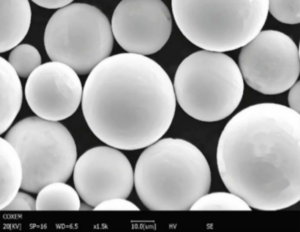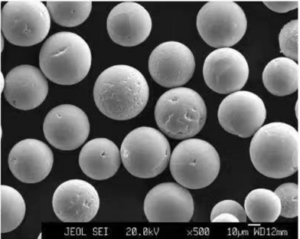合金粉末 は、単一の純金属ではなく、合金から作られた金属粉末を指す。合金とは、強度、耐食性、切削加工性などの特定の特性を向上させるために設計された2種類以上の金属元素の混合物である。合金粉末は、粉末冶金用途において純金属粉末とは異なるユニークな利点を提供します。
合金粉末の概要
合金粉末は、組成を調整することで特性を調整することができます。この表は、合金粉末の概要と主な特性を示しています:
| パラメータ | 詳細 |
|---|---|
| 定義 | 純金属ではなく合金からなる金属粉 |
| 構成 | 2種類以上の金属元素の混合物 |
| 主要物件 | 強度、耐食性、硬度、被削性、延性、耐摩耗性、導電性、外観 |
| 調整機能 | 合金元素の比率を変えることで、特性を調整することができる。 |
| 製造工程 | 溶融合金の微粉化 |
| 粒子形状 | プロセスにより不規則、球状、樹枝状 |
| 一般的な合金システム | スチール、ステンレススチール、アルミニウム、銅、ニッケル、コバルト、チタン |
| 用途 | 粉末冶金部品、溶射、金属射出成形(MIM)、積層造形 |
合金粉末は、特定の特性を持つ材料を設計する能力を提供することで、粉末冶金の能力を拡張します。合金粉末の主な特徴は以下の通りです:
- 構成 – 合金粉末は、所望の特性を達成するために、少なくとも2つの金属元素を様々な比率で含んでいる。一般的なシステムには、鋼、アルミニウム、および銅合金が含まれます。
- 調整可能なプロパティ 合金元素の割合を変えることによって、材料は強度、耐食性、硬度、延性、電気抵抗率、その他の特性を調整することができる。
- 製造工程 合金粉末は、溶融合金の微粒化によって製造され、良好な流動性と充填性を備えた微細な球状粉末粒子を生成します。
- 粒子特性 粉末の形態、粒度分布、および純度は、噴霧化方法によって異なります。粉末は不規則であったり、球状であったり、樹枝状であったりする。
- 合金システム – 何百もの標準化された合金組成およびカスタム合金組成が利用可能です。鋼、ステンレス鋼、アルミニウム、銅、ニッケル、コバルト、チタン合金が一般的です。
- 用途 合金粉末は、PM部品、溶射皮膜、金属射出成形部品、3D印刷物の製造に使用されます。
このような調整可能な幅広い特性を持つ合金粉末は、工業用途において重要な材料工学的ツールを提供します。次のセクションでは、合金粉末の種類、加工方法、用途について詳しく説明します。
合金粉末の組成と特性
多くの標準化された、あるいは独自の合金粉末配合が存在する。この表は、最も一般的な合金系とその一般的特性をまとめたものです:
| 合金システム | 典型的な構成 | 主要物件 | 用途 |
|---|---|---|---|
| ステンレス | Fe, Cr (10-20%), Ni | 耐食性、強度、耐摩耗性 | バルブ、船舶用部品、食品加工機器 |
| 工具鋼 | Fe、Cr、V、W、Mo | 高硬度、高強度、耐摩耗性 | 切削工具、金型、機械部品 |
| 低合金鋼 | Fe + Mn, Si, Ni, Cr, Mo | 靭性、強度、焼入れ性 | ギア、エンジン部品、ファスナー |
| アルミニウム | Al + Cu, Mg, Si, Zn | 軽量、耐食性、切削性 | 航空宇宙部品、自動車部品 |
| 銅 | Cu + Zn, Sn, Al | 導電性、耐食性、機械加工性 | 電気接点、溶接チップ、ベアリング |
| ニッケル | Ni + Cr, Mo, Cu, Fe | 耐食性、高温強度 | ガスタービンブレード、化学装置 |
| コバルト | Co + Cr, Mo, Ni, W, C | 高温強度、生体適合性 | 歯科用インプラント、切削工具、整形外科用インプラント |
| チタン | Ti + Al, V, Cu, Ni | 軽量、耐食性、生体適合性 | 航空宇宙部品、医療用インプラント |
適切な母材と合金元素を選択することで、粉末冶金合金を設計することができる:
- 耐荷重用高強度
- 切削工具の硬度と耐摩耗性
- 化学薬品や海水に対する耐食性
- 高温性能と耐クリープ性
- 絶縁から高伝導まで、オーダーメイドの導電性
- 医療用インプラントおよび医療機器の生体適合性
- 純金属では得られないこれらの特性の組み合わせ
合金組成の柔軟性により、特定の用途や使用条件に合わせてカスタム材料を設計することができる。
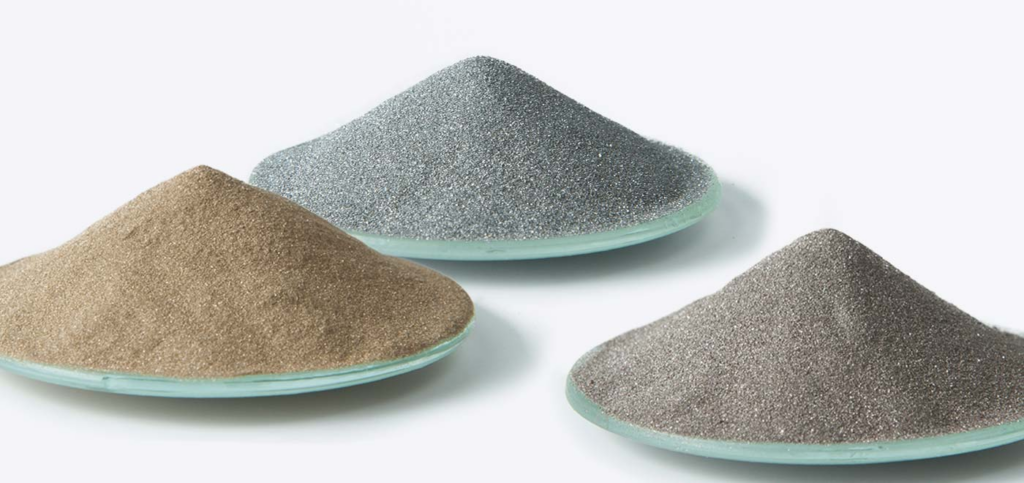
合金粉末の製造方法
合金粉末は、粉末冶金に必要な小さな球状粒子を生成するために、いくつかの噴霧化技術を使用して製造することができる。代表的な方法は以下の通りである:
| 方法 | 説明 | 粒子特性 | 合金能力 |
|---|---|---|---|
| ガス噴霧 | 高圧不活性ガスジェットで噴霧化された溶融金属の流れ | 微細球状粉末、良好な流動性 | ほとんどの合金 |
| 水の霧化 | 高速ジェット水流による溶融流の分解 | サテライトを形成する不規則な粒子 | 耐酸化合金に限る |
| 回転電極 | 遠心力で溶融金属を微細な液滴に分散させる | 比較的粗い粒度分布 | 導電性合金のみ |
| プラズマ霧化 | プラズマ中で蒸発し、再凝縮した金属粉 | 非常に微細な球状粒子 | 高性能合金 |
ガスアトマイゼーションは、その多用途性と微細な球状粉末の生成により、最も広く使用されているプロセスである。水アトマイズは低コストだが、ステンレス鋼のような酸化に強い合金に限られる。プラズマ法はナノスケールの合金粉末を製造できるが、資本コストが高い。
ガス流量、金属注入速度、冷却速度などの噴霧化プロセスパラメータは、所望の粒度分布、形態、純度、微細構造を得るために最適化することができる。合金粉末製造工程は、特定の組成に合わせて調整され、PM部品製造用の高品質粉末原料を製造する。
合金粉末の特性
合金粉末の特性と性能は、組成に加えて、以下のような特性によって決定される:
| パラメータ | 説明 |
|---|---|
| 粒度分布 | 粉末中の粒子径の範囲;微粒化プロセスによって制御される。 |
| 粒子形状 | 球状、不規則、樹枝状;粉体の流動と充填に影響する。 |
| 粒子表面の形態 | 衛星の有無、表面の平滑度、内部の空隙率 |
| 化学組成 | 合金元素の比率。偏析により公称値と異なる場合がある。 |
| 現在のフェーズ | 急冷凝固により粉末中に形成される相。 |
| 不純物 | 霧化中に拾われた酸素、窒素、炭素などの汚染物質 |
| 見かけ密度 | 指定圧縮圧力下での粉末充填密度 |
| 流量 | 粒子形状と粒度分布に関連する粉体の流動能力 |
これらの粉末特性は、プレス、焼結、金属射出成形、積層造形などのプロセスにおける製造挙動に影響を与える。例えば、不規則な粉末粒子は、粉末プレスにおけるダイフィリングとグリーン強度を低下させる。チタンのような化学的に反応しやすい元素は、噴霧化中の酸素ピックアップに敏感である。
合金の化学的性質と粉末の物理的性質の両方を注意深く管理・試験することで、その後の粉末冶金加工のための高品質の原料を確保します。試験方法には、光学顕微鏡、電子顕微鏡、レーザー回折式粒度分布測定、タップ密度測定、粉末レオロジー、化学分析などがあります。
合金粉末の用途
そのユニークな調整可能な特性により、合金粉末組成物は幅広い粉末冶金用途で使用されている:
パウダープレスと焼結部品
- 自動車用構造部品 – 強度用合金鋼
- ステンレス鋼バルブ、継手、フィルター – 耐食性
- 銅合金接点、コネクタ – 電気伝導性
- 鉄および非鉄機械部品 – 強度、耐摩耗性
金属射出成形部品
- ステンレス鋼整形外科インプラント – 生体適合性、強度
- コバルト超合金タービンブレード – 高温強度
- 銅合金の電子部品 – 熱伝導性
- アルミニウム合金製銃器部品 – 軽量
- 低合金鋼ギア – 靭性、疲労強度
溶射コーティング
- ステンレス鋼コーティング – 耐食性、耐摩耗性
- コバルト合金コーティング – 高温硬度、耐摩耗性
- ニッケル合金コーティング – 耐食性
- 超硬強化コーティング – 極めて高い耐摩耗性
積層造形用粉末
- 航空宇宙部品用チタン合金 – 強度、軽量性
- 歯科ブリッジ用コバルトクロム合金 – 強度、生体適合性
- 金型用工具鋼 – 高硬度、熱安定性
- 自動車用アルミニウム合金 – 軽量、耐食性
その他の用途
- 粉末鍛造コネクティングロッド、ギア – 合金鋼、アルミニウム
- ろう付け合金、はんだペースト – 銅、銀、ニッケル合金
- ハードフェーシング合金 – 鉄、コバルト、カーバイドのブレンド
合金粉末の組成は、このような特定の用途や使用条件に対応した材料のエンジニアリングを可能にする。
合金粉末のサプライヤーとコスト
多くの大手金属粉末サプライヤーは、豊富な合金粉末在庫とカスタム合金能力を有しています。以下にガスアトマイズ合金粉末の世界的な主要サプライヤーを紹介します:
| 会社概要 | 本社所在地 |
|---|---|
| サンドビック | スウェーデン |
| ホーガナス | スウェーデン |
| リオティント・メタル・パウダーズ | カナダ |
| ポメトン | イタリア |
| JFEスチール | 日本 |
| BASF | ドイツ |
| CNPCパウダー | 中国 |
合金粉末のコストは、特定の組成、粉末の特性、ロットサイズ、および購入量によって異なります。価格帯の例をいくつか挙げる:
| 合金粉末 | おおよそのコスト(USD/kg) |
|---|---|
| ステンレス | $12 – $60 |
| 工具鋼 | $9 – $30 |
| アルミニウム合金 | $10 – $50 |
| 銅合金 | $20 – $60 |
| コバルト合金 | $80 – $220 |
| チタン合金 | $100 – $500 |
価格は合金の種類、粒度分布、製造方法(ガス噴霧か水噴霧か)、注文量によって大きく異なる。特注合金は標準組成より高い。コバルトやチタン合金のような貴金属はより高価です。
合金粉末サプライヤーの選び方
高品質の原料を得るためには、信頼できる合金粉末サプライヤーを選ぶことが重要です。サプライヤーを選択する際の主な要因を以下に示します:
- 必要とされる特定の合金組成の製造経験
- 各粉末ロットの厳しい品質保証テスト
- 化学分析と粉体特性の文書化
- クイックデリバリーのための標準組成物の在庫
- 必要に応じて合金組成をカスタマイズする能力
- 知識豊富なテクニカル・サポート・スタッフ
- 競争力のある価格、特に大量注文の場合
- 少量の試作品供給への意欲
- 問い合わせや見積もり依頼への対応
- 確立された製品の一貫性と信頼性
サプライヤーは、粉末の化学組成、粒度分布、形態、見かけ密度、流量、その他の特性を詳述した分析証明書を提供できるはずである。サンプルをテストし、実際のパウダーの性能を検証することも、初回認定時に推奨される。
合金粉末の保管と取り扱い
適切な保管と取り扱いは、合金粉末の汚染や特性の変化を防ぐ。推奨される慣行は以下の通り:
- 湿気、油、腐食性蒸気の発生源から離れた、涼しく乾燥した清潔な環境で容器を密閉して保管すること。
- 容器内の結露を避けるため、保管中の温度変化を制限する。
- 古い在庫から使用するよう在庫を回転させる
- 酸化を防ぐため、取り扱い中に粉体が空気に触れないよう保護する。
- 異なる合金や粒度分布の粉末の混合は避ける。
- 容器が倒れたりこぼれたりしないよう、慎重に取り扱うこと。
- 粉末の移送には、清潔で乾燥したスクープと器具を使用する。
- 粉を取り除いた容器はすぐに密封する
- 材料バランスを維持するために、取り除いた粉の質量を測定し、記録する。
- 二次汚染を防ぐため、バッチ処理とバッチ処理の間に装置を徹底的に洗浄する。
取り扱い、保管、記録に注意を払うことで、合金粉末は、その後の加工において、その形状、組成、特性を維持することができる。
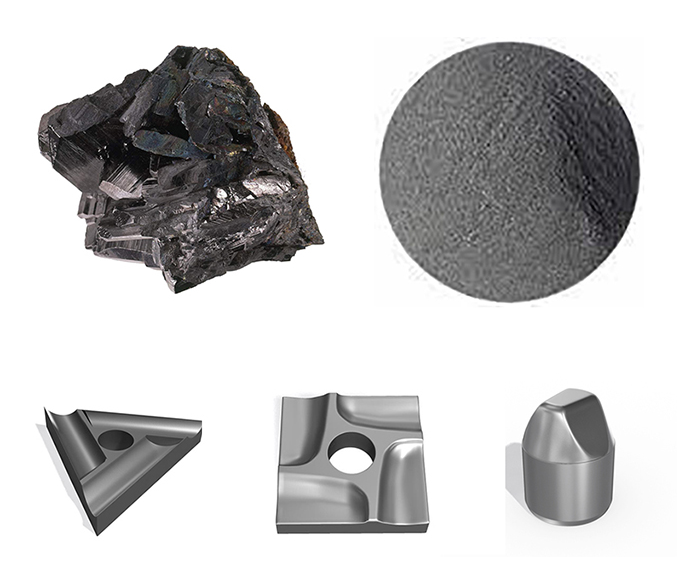
合金粉末のメンテナンス
合金粉末冶金コンポーネントが使用されるようになると、時折メンテナンスが必要になることがあります。この表は、合金特有のメンテナンスの側面をいくつか挙げています:
| 考察 | 詳細 |
|---|---|
| ガルバニック腐食 | 異種合金の組み合わせは、水に濡れると腐食を増大させる可能性がある。直接接触する異種合金の組合せは避ける。 |
| 応力腐食 | オーステナイト系ステンレス鋼のような影響を受けやすい合金は、応力下で塩化物にさらされるとクラックが入ることがある。このような条件下での使用は避けること。 |
| 高温特性 | 合金によっては、高温になると強度と耐クリープ性が低下する場合がある。設計限界を超えないことを確認してください。 |
| 接触抵抗 | 銅合金と鋼鉄の界面での電圧降下を防ぐために、導電性コーティングが必要になるかもしれない。 |
| バイオファウリング | 銅合金は、海洋環境において生物付着抵抗性がある。その他の合金は保護コーティングが必要な場合があります。 |
| ジョイント強度 | ろう付けまたは溶接の合金は、接合部の完全 性を確保するために母材の組成に合わせる必要が ある。 |
合金粉末冶金コンポーネントを含む機器を保守す る場合は、環境要因と合金の適合性を考慮してくださ い。定期的な検査、潤滑、洗浄、接合部の締め付けが必要な場合があります。
合金粉末の長所と短所
合金粉末には多くの利点があるが、純金属粉末と比較すると固有の欠点もある:
合金粉末の利点
- 強度、耐摩耗性、導電性などの特性を調整
- 純鉄粉やスチール粉よりも耐食性が高い
- 純金属に比べ、カジリや焼付きが少ない。
- 耐荷重用に強度を高めることができる
- 高硬度、強靭性、生体適合性のオプション
- 再生スクラップから一貫した組成
合金粉末の欠点
- 純鉄粉、銅粉、アルミ粉より高価
- 標準化された組成物の数は限られている
- カスタム合金の開発は高価で時間がかかる
- 偏析は公称化学的性質から逸脱する可能性がある。
- クロムのような反応性元素は、アトマイズ中に酸化される可能性がある。
- 合金組成の相互混合ができないため、粉末の再利用には限界がある。
- 合金元素はP/Mにおいて加工上の問題を引き起こす可能性がある
多くの用途において、調整された合金特性の利点は、純金属粉末と比較して増加するコストと加工の複雑さを上回ります。しかし、既存のP/M部品設計で合金を代用する場合は、実現可能性の評価が必要です。
合金粉末とプレアロイ鋼粉末の比較
合金粉末はプレアロイ鋼粉末と組成や製造方法が異なる:
| パラメータ | 合金粉末 | プレアロイ鋼粉 |
|---|---|---|
| ベース構成 | ステンレス鋼、工具鋼、ニッケル合金などの各種金属システム | 鉄または鉄+炭素(鋼) |
| 合金元素 | 特性を調整するために加えられる1種類以上の金属 | 炭素+Mn、Ni、Moなどの微量合金元素 |
| 製造方法 | 溶融合金の霧化 | 鉄粉と黒鉛粉のプレブレンド |
| 合金分布 | 粉体粒子全体が均一 | 合金元素は粉末表面のみ |
| 焼結構造 | 均質、凝固中に形成される相 | 不均質、焼結中に形成される相 |
| コスト | 合金添加による増加 | カーボンが安価なため、より低い |
プレアロイ鋼粉末は製造コストが低いが、合金含有量に制限がある。合金粉末は組成の自由度が高いが、原料費が高くなる。組成の選択は、用途に必要な性能とコスト目標とのバランスに依存する。
合金元素の特性への影響
合金元素の違いによって、粉末冶金の特性はさまざまな影響を受ける:
| 合金元素 | 主な効果 |
|---|---|
| カーボン | 強度と硬度は向上するが、延性と耐食性は低下する。 |
| クロム | 鋼の耐食性と焼入れ性を向上させる。 |
| ニッケル | 靭性、引張強さ、高温特性が向上 |
| モリブデン | 高温強度、耐クリープ性、焼入れ性の向上 |
| マンガン | 焼入れ性と引張強さを向上させ、ニッケルよりもコストを下げる。 |
| シリコン | 焼結時の流動性を向上させるが、延性と表面仕上げを低下させる。 |
| 銅 | 低合金鋼と青銅を強化し、耐食性を向上させる。 |
| アルミニウム | 鋼の強度と耐食性を高める軽量の合金元素。 |
| バナジウム | 耐摩耗性と硬度を大幅に向上させるファインカーバイドフォーマー |
| タングステン | 工具鋼の耐摩耗性のために非常に硬いタングステンカーバイドを形成する。 |
各添加の効果を理解することで、材料エンジニアは合金粉末で目標特性を達成するための組成をモデル化し、最適化することができます。合金含有量のわずかな変動が性能に大きく影響することがあります。
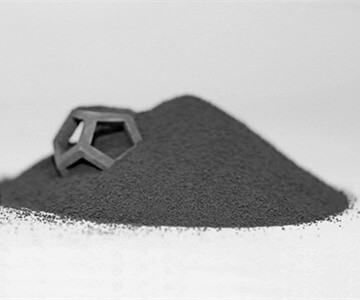
合金粉末による設計上の考慮点
合金粉末を使用する粉末冶金部品を設計する際には、いくつかの要素を考慮する必要がある:
- コスト – 合金添加は、純鉄または鋼粉に比べて原料コストを増加させます。性能と予算のバランスをとる。
- 焼結後の処理 合金は、熱処理、機械加工、溶接、表面仕上げなどの二次加工に適合しなければならない。
- 耐食性 – 合金組成は、使用環境に耐えるように調整することができます。例えば、水中でステンレスを使用します。
- 機械的性質 必要な強度、硬度、耐摩耗性などによって、合金系と炭化物や強化相の量が決まる。
- 寸法管理 合金含有量が高いと焼結収縮が大きくなる。金型寸法にこれを考慮してください。
- 技術力 – P/Mメーカーが、検討している特定の合金組成について経験があることを確認する。
- パート統合 アセンブリ間の合金の不一致は、電解腐食につながる可能性があります。可能であれば、合金ファミリーを標準化する。
堅牢でコスト競争力のある粉末冶金部品を製造するには、設計の初期段階で徹底した合金の選択が不可欠です。
合金粉末の用途例
以下に、様々な産業における合金粉末の用途を例示する:
自動車
- カムシャフト – 高強度・高耐摩耗性の焼結低合金鋼粉末を使用。合金組成は、エンジンバルブの作動に必要な硬度と破壊靭性のために最適化されています。
- コンロッド – 合金鋼の粉末を鍛造または焼結して、重量を最小限に抑えながら、必要な引張強度を強化。ニッケル、モリブデン、および他の元素との合金化は、適切な機械的特性を提供します。
- ギア – クロム、ニッケル、およびモリブデンを添加した合金鋼粉末により、焼結パワートレインギアは、自動車のサイクル荷重下で必要な疲労強度と破壊靭性を達成できます。調整された合金組成は、摩耗を低減します。
- ターボチャージャーホイール – インコネル 718 のような高性能超合金は、極度の遠心応力と温度に耐えるターボチャージャーコンプレッサーホイールの積層造形に粉末状で使用されます。このニッケルベースの合金は、強度と耐クリープ性を提供します。
- エンジンバルブ – クロムおよびニッケルを含むステンレス鋼合金粉末により、長い運転寿命にわたって高温の排気ガスからの攻撃に耐える、耐腐食性の排気バルブの製造が可能になります。この合金は、高温でも強度と安定性を維持します。
- ブレーキディスク – 銅合金粉末は、過度の重量増加を伴わずに熱伝導性、減衰性、および耐摩耗性を向上させるために、ブレーキディスクの配合に配合されることがあります。高い放熱性により、繰り返しのブレーキング時のフェードが減少します。
合金粉末組成物は、粉末冶金技術を使って、強度、硬度、耐食性、疲労寿命、高温安定性といった自動車パワートレイン部品の特性を最適化することができる。
Additional FAQs on Alloy Powder
1) How do pre-alloyed powders differ from blended elemental powders in performance?
Pre-alloyed powders solidify with uniform chemistry inside each particle, giving consistent sintering behavior and mechanical properties. Blended elemental mixes can segregate and rely on diffusion during sintering, which may cause local chemistry variation.
2) What particle size distributions work best for different PM processes?
- Press-and-sinter: ~20–150 μm (often multimodal to boost packing).
- MIM/binder jetting: D50 ~5–20 μm for high sinter activity.
- Laser PBF: D10–D90 ≈ 15–45 μm spherical for stable recoating.
- EBM: 45–105 μm spherical, tolerant of coarser cuts.
3) Which alloy powder systems are preferred for corrosion-critical applications?
Austenitic stainless steels (e.g., 316L), duplex SS in some cases, Ni-based alloys (e.g., 625, 718), and Ti alloys for chloride and biomedical environments, provided low O/N/C and appropriate surface finish.
4) How do interstitials (O, N, C, H) impact alloy powder parts?
They can embrittle (raise DBTT), alter phase balance, reduce ductility/fatigue, and change sinter kinetics. Control via inert atomization, vacuum/H2 heat treatments, and dry, inert storage/handling.
5) What data should be on a certificate of analysis (CoA) for alloy powder?
Full chemistry (including interstitials), PSD, morphology notes, apparent/tap density, flow (Hall/Carney), moisture, and lot traceability. For AM, also satellite content, internal porosity, and recommended sieving limits.
2025 Industry Trends in Alloy Powder
- Qualification at scale: Material passports link alloy powder lots to part serials; in-situ PBF monitoring reduces destructive testing for common alloys.
- Copper and aluminum AM uptake: Wavelength-optimized lasers enable higher conductivity Al/Cu builds; new Al–Sc and Cu–Cr–Zr variants mature.
- Sustainability: Broader recycled content (particularly Fe-, Ni-, Cu-based powders), argon recirculation, and Environmental Product Declarations (EPDs).
- Cost-down via process hybrids: AM preforms + forging/HIP for Ni and Ti alloys to achieve wrought-like properties with reduced buy-to-fly.
- Health and safety focus: Wider adoption of NFPA 484-aligned powder rooms, closed-loop sieving, and O2/moisture monitoring.
| 2025 Metric (Alloy Powder/PM-AM) | Typical Range/Value | Why it matters | ソース |
|---|---|---|---|
| LPBF relative density (316L, 718, Ti-64; with HIP) | 99.5–99.9% | Production-grade properties | Peer-reviewed AM studies; OEM notes |
| Binder jetted density after sinter/HIP (17-4PH, 420) | 95–99% | Large parts at lower cost | Vendor case data |
| Typical LPBF PSD | D10–D90 ≈ 15–45 μm | Recoating stability | ISO/ASTM 52907 |
| Oxygen spec (implant-grade Ti-64 ELI) | ≤0.13 wt% | Ductility/biocompatibility | ASTM F136/F3001 |
| Recycled content in Fe/Ni powders | 25–45% | Sustainability and cost | USGS/industry reports |
| Indicative prices (gas-atomized) | SS: $12–$60/kg; Ni: $40–$150/kg; Ti: $180–$450/kg | Budgeting and sourcing | Supplier quotes/market trackers |
Authoritative references and further reading:
- ISO/ASTM 52907 (feedstock), 52910 (DFAM), 52931 (LPBF metals): https://www.astm.org and https://www.iso.org
- ASM Handbook (Powder Metallurgy; Stainless, Nickel, Titanium): https://www.asminternational.org
- USGS Mineral Commodity Summaries: https://pubs.usgs.gov/periodicals/mcs
- NFPA 484 (combustible metals safety): https://www.nfpa.org
- NIST AM Bench and datasets: https://www.nist.gov
Latest Research Cases
Case Study 1: Gas‑Atomized Duplex Stainless Alloy Powder for Corrosion‑Fatigue Parts (2025)
Background: A marine pump OEM needed improved chloride SCC resistance and fatigue strength over 316L.
Solution: Qualified a duplex SS alloy powder (balanced austenite/ferrite) with tight O/N control; LPBF with platform preheat, followed by HIP and solution treatment.
Results: 2.1× improvement in corrosion‑fatigue life (3.5% NaCl, R=0.1) vs. LPBF 316L; density 99.8% after HIP; 12% cost increase offset by 30% longer service interval.
Case Study 2: Binder‑Jetted Low‑Alloy Steel with Cu‑Ni Additions for Gears (2024)
Background: An automotive supplier sought near‑net gears with reduced machining and comparable fatigue to wrought 8620.
Solution: Fine PSD water‑atomized pre‑alloyed Fe‑Cu‑Ni powder; debind + sinter + optional carburize/HIP; controlled porosity distribution.
Results: 97–98.5% density (99% with HIP), bending fatigue met target; machining time reduced 35%, part cost down 18% on pilot lot.
Expert Opinions
- Prof. Randall M. German, Powder Metallurgy authority and author
Key viewpoint: “Sphericity and clean surfaces are the strongest predictors of sinter densification and AM part integrity across alloy systems.” - Dr. Martina Zimmermann, Head of Additive Materials, Fraunhofer IWM
Key viewpoint: “For Ni and Ti alloy powders, interstitial control and HIP remain decisive for fatigue; in‑situ monitoring is now integral to qualification strategies.” - Richard Preston, Technical Director, International Molybdenum Association (IMOA)
Key viewpoint: “Alloy design leveraging Mo and Cr continues to drive corrosion and high‑temperature performance in pre‑alloyed powders used for harsh environments.”
Citations for expert profiles:
- Fraunhofer IWM: https://www.iwm.fraunhofer.de
- IMOA: https://www.imoa.info
Practical Tools and Resources
- Standards and safety
- ISO/ASTM 52907, 52910, 52931; NFPA 484 combustible metals
- Powder and process data
- ASM Handbooks; NIST AM Bench datasets; USGS commodity stats
- Characterization and QC
- LECO O/N/H analyzers: https://www.leco.com
- Laser diffraction/SEM services (e.g., Malvern, university labs)
- CT scanning per ASTM E1441 for internal defects
- Design and simulation
- Ansys Additive/Mechanical; COMSOL; nTopology (lattices, heat flows)
- Market and sourcing
- Senvol Database for machines/materials: https://senvol.com/database
Last updated: 2025-08-21
Changelog: Added 5 targeted FAQs, 2025 trend table with metrics and sources, two recent alloy powder case studies, expert viewpoints with citations, and a practical tools/resources list.
Next review date & triggers: 2026-02-01 or earlier if ISO/ASTM standards update, major OEMs publish new qualification datasets, or alloy powder pricing/availability shifts >10% QoQ.
